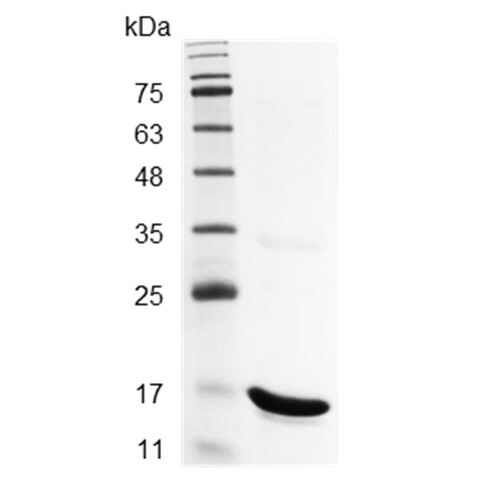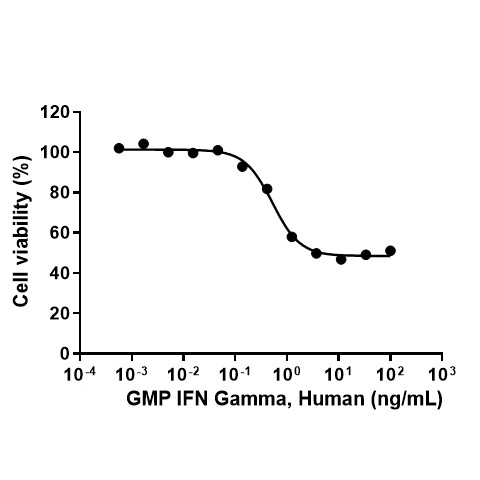| Background |
The cytokine IFN gamma could protect cells from viral infections and belongs to the family of interferons. A lot of studies have shown that IFN gamma secreted by antigen triggered cell types, including T cells, naive CD4+ T cells, macrophages, dendritic cells, and B cells. IFN gamma plays an important role to trigger the macrophage act against a diverse group of microbial targets, and the pleiotropic molecule associated with antiproliferative, pro-apoptotic and antitumor mechanisms. Based on the effector cytokine considered as a major effector of immunity, it has been used in the treatment of several diseases. |
| Synonyms |
interferon gamma, Type II interferon, T-cell interferon, MAF |
| Uniprot ID |
P01579 |
| Molecular Weight |
The protein has a calculated MW of 17.7 kDa.
The protein migrates as 17 kDa under reducing condition (SDS-PAGE analysis). |
| Expression System |
Escherichia coli |
| Purity |
>95% as determined by SDS-PAGE analysis. |
| Activity |
Measure by its ability to induce cytotoxicity in HT29 cells. The ED₅₀ for this effect is <1 ng/mL. The specific activity of recombinant human IFN gamma is approximately >2 x 10⁶ IU/mg, which is calibrated against the human IFN Gamma WHO Reference Material (NIBSC code: 87/586). |
| Endotoxin Level |
<0.05 EU per 1 μg of the protein by the LAL method. |
| Protein Sequence |
MQDPYVKEAENLKKYFNAGHSDVADNGTLFLGILKNWKEESDRKIMQSQIVSFYFKLFKNFKDDQSIQKSVETIKEDMNVKFFNSNKKKRDDFEKLTNYSVTDLNVQRKAIHELIQVMAELSPAAKTGKRKRSQMLFQGRRASQ with polyhistidine tag at the C-terminus. |
| Protein Tag |
His Tag (C-term) |
| Form |
Lyophilized from a 0.2 µm filtered solution of PBS, pH 8.0. |
| Application |
Cell Culture |


 No references are available
No references are available
 Follow Us
Follow Us